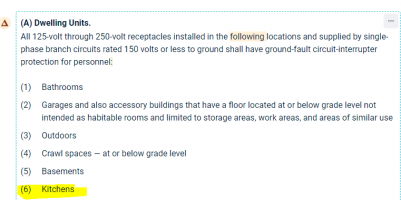Mass allows an exception if the appliance is not compatible with GFCI protection
Rule 11. Electrical installations that appear incompatible with GFCI protection as covered in 210.8 Exception of this Code, regardless of the code requirements in effect at the time when the permit as described in Rule 8 was issued, or when the installation was completed, shall be inspected by a qualified person. The inspection shall review all field elements of the branch- circuit equipment grounding return path, and the quality of any field-accessible cord connections if applicable. The inspection shall be documented, subject to audit by the Inspector of Wires, and inspected by him or her as deemed necessary. Installations of listed equipment that, under normal operating conditions, are found to be incompatible with GFCI protective devices as made available by the manufacturer of the circuit protection currently installed shall be excused from providing GFCI protection. If not connected to an individual branch circuit, incompatible equipment shall be directly wired or connected to a single receptacle, and the circuit shall be arranged so required GFCI protection is retained for the remaining outlets. The inspection documentation required by this rule shall constitute the notice required in Rule 8 and no additional notice shall be required for corrections applied accordingly. The location and the date of this determination shall be forwarded to the Department of Fire Services for inclusion in a central registry of such allowances. The report shall also include the appliance manufacturer and model, together with the identity of the GFCI protective device. This rule shall expire on January 1, 2026.
210.8. Insert the following exception after the first paragraph: Exception: Permanently connected equipment and cord-and-plug connected stationary equipment that is listed, but incompatible with GFCI protective devices as made available by the manufacturer of the circuit protection currently installed, shall be permitted to omit such protection provided it is installed and inspected in accordance with the provisions of Rule 11 of this Code. This exception shall expire on January 1, 2026.

